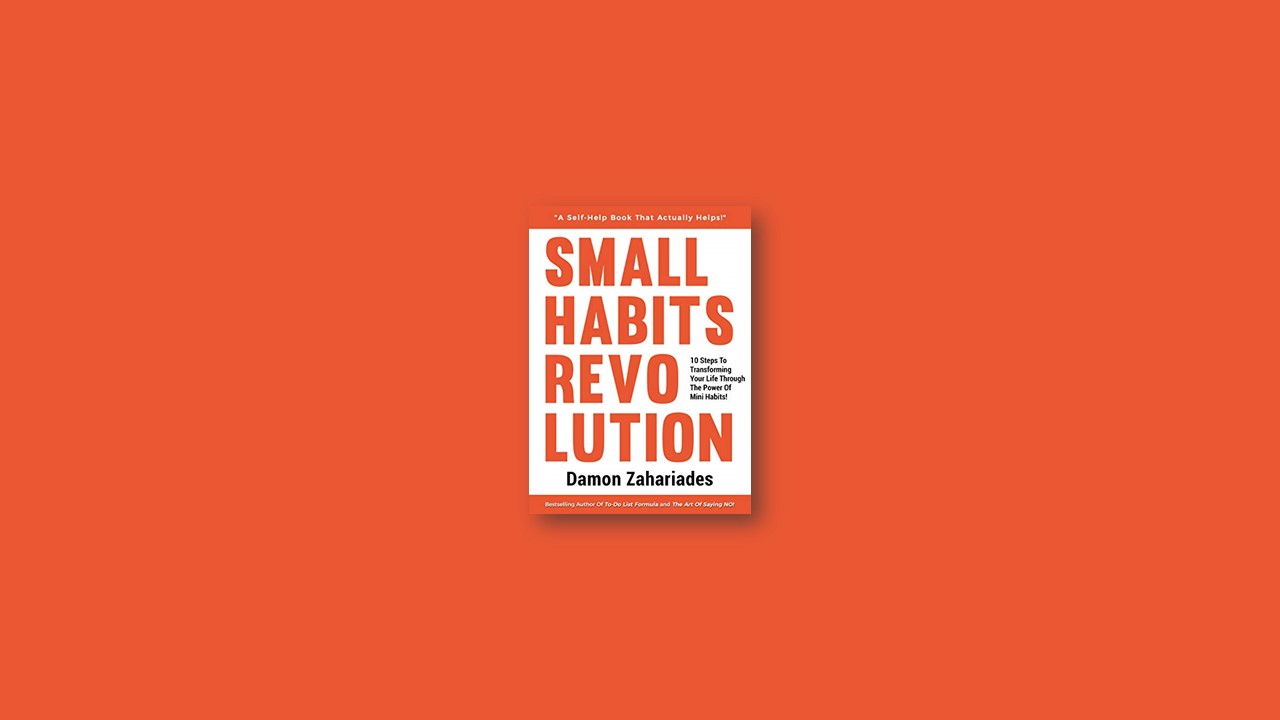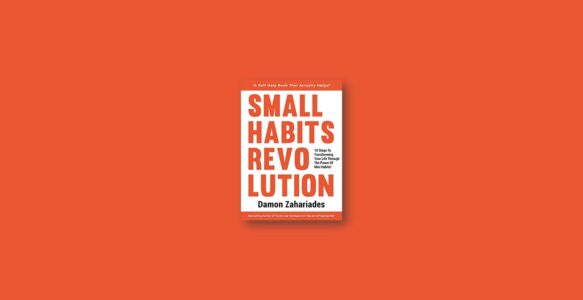Why Habits Will Always Trump Willpower
Motivation is temporary and fleeting. It comes and goes, and therefore you can’t rely on it. Likewise, willpower is a finite resource that is steadily depleted from the moment we wake up in the morning. Thus, like motivation, you can’t count on it.
If neither motivation nor willpower will help you to create and sustain new behavioral patterns, what’s the solution? It’s simple: small habits.
Consider what happens when you create a habit. It becomes an integral part of your daily experience, often to the point that you do it without thinking about it. You don’t weigh it against other options. Nor do you go through an internal debate regarding whether you have enough energy to perform the habit. It’s a part of your life, and you execute accordingly.
You brush your teeth each morning. You don’t think about doing it. You simply do it. It’s an ingrained habit and part of your daily experience. You don’t have to be motivated to brush your teeth. Nor do you need to exert willpower to do it. It simply gets done.
This is true for any habit you’ve developed, from putting on your seatbelt when you climb into a vehicle to typing without looking at your keypad. You do these things without thinking about them. They’re entrenched in your mind.
10 Steps To Forming Healthy Habits That Last
Step 1: Clarify The Goal You Want To Achieve With Your New Habit
First identify the specific outcome you’d like to enjoy. What do you want to achieve?
For example, suppose you want to lose 20 pounds. The weight loss is merely a means to an end (or possibly multiple ends). Specifically, you want to enjoy more energy during the day, look slimmer, feel better, and protect yourself against heart disease. These are your desired outcomes. They inform the types of habits you’ll pursue.
In addition, don’t merely say you’d like to lose weight. Determine the number of pounds you’d like to lose as well as the reasons you’d like to lose them.
Once you know your desired outcome, proceed to Step 2 with confidence that you’ll choose the habits that best complement it
Step 2: Identify The Habit You Want To Develop
Now that you’ve clarified your goal, you can boldly pick habits that’ll streamline the process of achieving it. You won’t run the risk of choosing new behaviors that slow the process down or worse, derail your efforts entirely.
Using our weight loss example, let’s say your goal is to enjoy more energy in the afternoon, the time of day when mental fatigue typically sets in. Following are a few small habits that will help:
- Go to bed 30 minutes earlier each night.
- Eat a light lunch.
- Avoid sugary snacks. Choose snacks with protein.
- Do five pushups during each afternoon break.
- Stay hydrated.
- Reduce your afternoon work sessions to 30 minutes. Take 5-minute breaks between them. Stretch your muscles or take a walk.
Notice how some of these habits aren’t directly related to losing weight. Instead, they address your main objective, the reason you want to lose weight. They help you to sustain your energy levels and avoid the afternoon slump
Step 3: Break Down Your New Habit To Its Smallest Iteration
The biggest obstacle to performing any new habit is that we often make it too daunting. It takes so much effort to perform it that we feel discouraged.
Leo Babauta, who runs the popular website ZenHabits.net, once said the following about adopting new habits: “Make it so easy you can’t say no.”
If you’re trying to do pushups, start with five (or even one). If you’re trying to drink more water, start with a few extra ounces. If you’re trying to get up earlier in the morning, set your alarm five minutes ahead of the time you normally wake up.
Give yourself permission to start small. You’ll find that doing so will erase any internal resistance you feel about starting at all.
Step 4: Create A Cue To Trigger The Habit
We set the circumstances that spur us to take action.
For example, if you want to start jogging each morning, you might position your running shoes next to your bed. Seeing them upon waking would be the trigger that prompts you to jog. If you want to keep your workstation clean, you might clear it off right before you leave your office each day. In this case, 5:00 p.m. (or whenever you leave the office) is your trigger.
Use time, location, or even your emotional state. For example, suppose you want to get into the habit of saying hello to strangers. You may not have an existing routine that can trigger this behavior. But you can create one based on location. Here’s how:
Commit to greeting at least one stranger each time you visit your local grocery store. Or promise yourself that you’ll say hello to one stranger while standing in line at Starbucks. Over time, this location-based routine will automatically cue your new habit.
Step 5: Establish A Clear Objective
Here, you assign a numeric value to your new habit. This value will help you to come up with a plan for building the habit, and allow you to monitor your progress along the way.
Suppose you want to start doing pushups. Don’t start with a goal of 50 per day if you’re a couch potato. Instead, start with five. You can do five. Your arms might shake a bit, but you won’t die. Five is your numeric value for this new habit. It gives you a set-in-stone starting point. It defines whether or not you have successfully performed the new habit on any given day. If you do three pushups, you know that you’ll have to perform two more before you can claim success.
This sounds simple, and perhaps even pedestrian. But it’s a critical step toward forming behavioral patterns that persist in the face of obstacles. You need a number that defines daily success.
Step 6: Design A Plan To Slowly Increase Your New Habit
Some habits are daily, one-time affairs. You’re not interested in increasing the number of repetitions. You just want to make sure that you do it each day. An example is flossing your teeth. You want to make sure it gets done each morning or evening (or both). You’re not interested in doing it 20 times a day.
Other habits are perfectly suited for increasing the number of repetitions or the amount of time allotted to them each day.
Don’t assume you’ll naturally increase your habit over time. Create a plan for doing so. Otherwise, internal resistance and external obstacles will almost certainly get in your way.
Let’s suppose you want to do 50 pushups per day. Here’s a hypothetical plan that will help you to work up to that point:
- Week 1: do 5 pushups
- Week 2: do 8 pushups
- Week 3: do 11 pushups
- Week 4: do 14 pushups
- Week 5: do 17 pushups
- Week 6: do 20 pushups
- Week 7: do 23 pushups
- Week 8: do 26 pushups
- Week 9: do 29 pushups
- Week 10: do 32 pushups
- Week 11: do 35 pushups
- Week 12: do 38 pushups
- Week 13: do 41 pushups
- Week 14: do 44 pushups
- Week 15: do 47 pushups
- Week 16: do 50 pushups
This may seem like a lot of time to reach your goal (50 pushups per day), but the weeks will pass quickly. At the end of the fourth month, you’ll look back and be astonished at your progress.
Step 7: Create A Simple Reward System
Rewards are a powerful tool when developing new behaviors. The more positive they are, the more they inspire us to act. Thus, it’s worth creating a reward system to aid you in developing whatever new habit you choose to pursue. How do you choose a reward that’ll serve as inspiration and won’t sabotage your efforts?
First, make it small. Suppose you’re developing the habit of cleaning your desk at the end of each workday. Don’t reward yourself with an expensive dinner at your favorite steakhouse. Instead, treat yourself to your favorite candy bar (opt for the smaller “fun size” if you’re watching your weight)
Second, make sure your reward doesn’t work against you. Suppose you’re trying to jog each day, in part to lose weight. It would make little sense to reward yourself with a donut after each jog. The donut would undermine your goal.
Third, experiment. Not every reward will be equally motivating to you. Some will be more compelling than others. For example, you may find that calling a friend is a bigger motivator than eating a candy bar. If so, make the phone call your reward for performing your chosen habit. Likewise, you might find that taking a short walk is more enjoyable to you than taking a catnap. If so, go for a walk immediately after performing your new routine. It’s only by experimenting with different rewards that you’ll find the one that works best for you.
Step 8: Perform The Habit At The Same Time Each Day
Think about the things you do at the same time each day. Here are a few examples:
- Brush your teeth
- Take a shower
- Eat lunch
- Go to the gym
- Watch your favorite television show
- Take a smoke break
- Make coffee
- Go for a jog
These activities are ingrained in your mind. You do them without thinking about them. They’re a part of your daily process. As such, failing to do one of them can put you in a state of unease.
That’s an important feature of these daily habits. You do them at the same time each day. That, in turn, causes them into evolve into automatic responses to established triggers.
Step 9: Identify The Stumbling Blocks That Can Sabotage You
Unfortunately, no matter how small the habit, internal and external forces will conspire against you. Your mind will try to persuade you to neglect your new routine in favor of more enjoyable activities – for example, taking a nap or watching TV.
Unanticipated circumstances may make it inconvenient to perform your habit. For example, a broken shoestring may undermine your intent to go jogging. A dead laptop battery may prevent you from writing your daily journal entry.
Whenever you form a new habit, it’s important to recognize the obstacles that stand between you and success. Identify them ahead of time. You’ll be ready to deal with them in a productive fashion that doesn’t impair your long-term success.
Step 10: Monitor Your Progress Once A Week
This is a simple step, but one that’s often overlooked or dismissed entirely. A lot of people try to adopt new habits without a system for keeping track of their progress.
It’s understandable. Tracking their progress requires time and effort. With so much going on in our lives, there’s little incentive to do it. But tracking your progress is the only way to measure how you’re doing according to your initial plans.
Keep an eye on your progress whenever you develop a new habit. It doesn’t matter whether you use spreadsheets, an app, or a pen and legal pad. As long as you’re tracking things.
Time For Action
You now have a simple, proven 10-step system for adopting any new habit you can imagine. It works. But as they say, the proof is in the pudding. If you apply the system, you’ll note its effectiveness from the outset.


